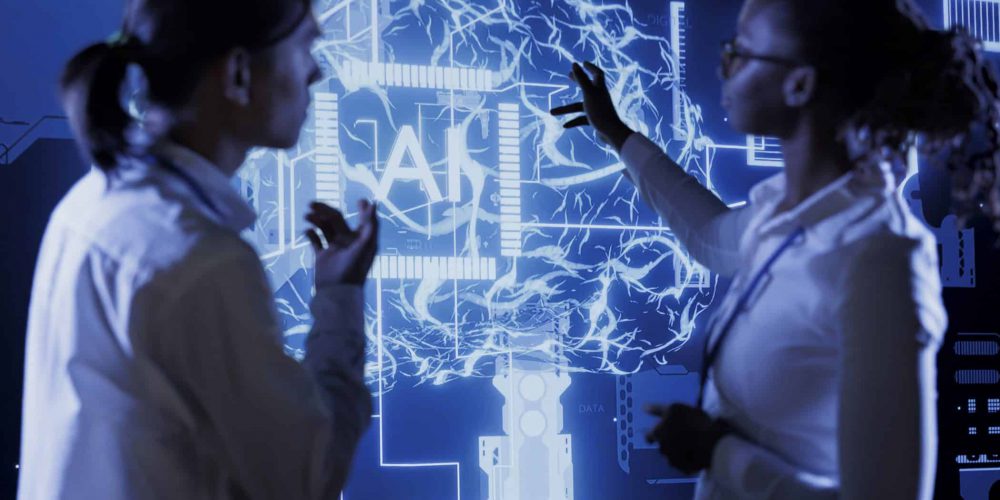As teams are being pushed by leadership and Boards to “do…
Summary
AI is rapidly evolving—and so are the platforms businesses rely on every day. In this blog, Rachel Holmes explores how leading tools like Adobe, HubSpot, Salesforce, Zendesk, and Workato are embedding agentic AI to automate workflows, personalize customer experiences, and drive smarter business decisions.
From Adobe’s Sensei and Firefly models to Salesforce’s Agentforce and HubSpot’s Breeze AI, these integrated capabilities are transforming marketing, sales, customer service, and business operations. The blog highlights how understanding and leveraging the AI already within your tech stack can boost productivity, efficiency, and performance across your organization.
AI is changing every day, and the toolsets businesses rely on are evolving alongside to provide agentic automation and intelligence directly inside our platforms. These advancements can drive truly beneficial, tangible results for organizations. Yet, many businesses are just scratching the surface of what the tools can offer. In this blog, we’ll explore how several leading platforms— Adobe, HubSpot, Salesforce, Workato, and Zendesk—are embedding AI and AI agentic capabilities to drive smarter processes, deeper insights, and measurable business impact.
AI Capabilities in Marketing Toolsets
AI marketing platforms hook into your workflows and tap into your database’s information about your customer base in order to support you with automation and content creation. While there are dozens (maybe hundreds) of standalone tools, you can also turn to the capabilities built into your current tech stack: Adobe and Hubspot.
Adobe’s AI Models
Adobe has multiple products, each with a specific purpose to support marketing and creative teams. A majority of their products have AI capabilities built in, though many require an additional module purchase to access them. There are two Adobe AI models that are embedded within Adobe’s products:
- Sensei: A predictive and decisioning model for personalization, targeting, automation, and analytics. Sensei gives users suggestions, automates content tagging, and delivers refined results based on customer behavior. Sensei can be found in products like Marketo Engage, Target, Analytics, AJO, and Adobe Experience Platform (which we’ll describe in further detail below).
- Firefly: A generative AI model for content creation including images, text effects, and design. Firefly helps users generate visuals, video clips, images, and sound effects. Firefly is found in Photoshop, Illustrator, Express, and GenStudio.
Beyond its AI models, Adobe also offers a generative AI-first platform called GenStudio for Performance Marketing. The application empowers marketers to create, manage, and optimize campaign content such as ads and emails. Marketers can both create new content as well as reuse and personalize existing content for variations, which Adobe calls “remixing.” Access to GenStudio for Performance Marketing requires Adobe Experience Manager (AEM), Adobe’s content and digital asset management system for digital experiences (although there are a few workarounds if you don’t have AEM—talk to your Zirous representative to explore your options).
HubSpot Breeze AI
HubSpot supports smaller, more agile marketing teams for marketing and creative purposes. Its latest AI tools, packaged into a unified AI system called Breeze, include:
- Breeze Agents: Tools that enhance and automate different aspects of your CRM
- Breeze Assistant: A conversational AI assistant connected to your business data and ecosystem
- Embedded features: Built-in AI enhancements to support content creation, reporting, and coaching.
As of now, there are four Breeze AI agents in full production:
- Customer Agent (to resolve conversations)
- Prospecting Agent (to research and connect with prospects)
- Landing Pages for Events Agent (to generate on-brand event pages)
- Data Agent (to fill gaps in customer data)
In addition, HubSpot has 16 Breeze AI agents along the way in beta, which can do anything from personalization to content creation. Availability of the agents depends on the different package tier in Hubspot, and all Breeze agents need HubSpot credits to use them.
AI Capabilities in Sales and Customer Service: Agentforce in Salesforce
AI sales and customer service platforms support activities across workflows from lead generation and nurturing, to sales coaching and meeting assistance. Similar to marketing tools, there are dozens of standalone AI solutions to support sales and customer service workflows. Rather than paging through options on Google, many capabilities live within Salesforce and are made accessible with Agentforce.
Salesforce has a variety of AI capabilities within the platform that can easily be enabled or disabled by an administrator. For example, Einstein shows users insights within the platform by clicking on items such as summarizing a Salesforce case ticket. Users can also leverage Prompt Builder to make or use AI prompt templates for continuous generative AI workflows, such as specific email builds.
Most powerfully, Salesforce provides access to Agentforce, Salesforce’s AI agent platform with ready-to-use agents to accomplish a variety of tasks for sales and customer support activities. Users can leverage both prebuilt and custom agents to automate unique workflows and processes, and deploy them across Salesforce, Slack, and customer portals. A few standard agents include:
- Agentforce for Employees: Helps employees access information, summarize relationships, forecast revenue, all in the flow of work.
- Agentforce Sales Development Rep (SDR): Keep leads engaged by fielding questions and streamlining tasks, such as using CRM and external data to schedule meetings.
- Agentforce for Setup: Finds documentation and customizes your org with a low-code promptable partner.
- Agentforce Service Agent: Provides your customers with personalized interactions, common answers, and a support path for escalation.
AI Capabilities in Service Desk: Zendesk AI Features
AI capabilities within service desk platforms ultimately aim to elevate service experiences for users and customers alike by automating routine tasks, improving service agent efficiency, and solving problems faster. Zendesk stands as a frontrunner in AI capabilities within service desk and support workflows.
A majority of Zendesk’s packages include essential AI agents to automate 30 percent of resolutions, enable generative AI powered replies, a customizable AI agent persona, and generative search within the knowledge base. Zendesk also offers two AI-powered add-ons to their packages:
- Agents Advanced to improve agent performance. Zendesk promises that advanced agents can resolve 80 percent of issues with autonomous AI agents.
- Copilot, a proactive AI assistant to analyze all tickets regardless of channel. It summarizes, suggests replies, auto fills data fields, and detects and labels ticket variables such as language, sentiment, and configured attributes.
Earlier in October, Zendesk hosted their AI Summit to announce major upcoming innovations with AI. Some of these updates include AI agents built for voice, AI assistants for administration, workflow builders, and application builders. Many of these capabilities are coming later in 2025 or are in early access, although some are generally available now, including:
- Action Builder: A low/no-code tool for building workflows and automations
- App Builder: Build and deploy custom applications
- Knowledge Connectors: Integrate external knowledge sources from Google and SharePoint into the Zendesk knowledge base
- Knowledge Builder: Create a knowledge base from past tickets and business context using AI
AI Capabilities in Business Processes: Workato AI Integrations
Integrating your business tools ensures data flows to and from the right places. The right integrations tools can improve existing inefficiencies, implement new applications, and support new business processes. AI capabilities within business process platforms can not only connect different tools, but they can automate different tasks between the tools. Workato, as an integration platform-as-a-service, enables businesses to automate workflows, integrate applications, and automate business processes and workflows.
Workato has two primary AI functions to support business processes. First, Workato embeds AI into the process of building workflows or “recipes.” A recipe is a no-code interface to set business workflows, such as setting up expense reports or employee onboarding steps. Within the recipe builder, users can interact with a generative AI copilot to build, analyze, and edit entire workflows. It also allows you to optimize your recipes on the topics of quality, security, cost, and performance.
The second AI function is Genies, or AI agents that perform multi-step activities. Genies can support a variety of teams and workflows, such as HR activities in recruiting and onboarding, IT tasks in provisioning and incident management, or security workflows to monitor and analyze threats. Businesses leverage Workato’s pre-built Genies or make their own that utilize custom recipes tailored to their business. Users can ask Genies questions directly in their toolsets like Slack or Teams, or a separate platform called Workato Go. Workato Go is a fully connected enterprise search for business processes. Users can get answers across enterprise apps and data sources in one secure spot, automate routine tasks, and orchestrate Genies across all toolsets.
Conclusion
If you’re feeling bombarded with new AI capabilities, tools, and features, you aren’t alone. But thoughtful, strategic understanding of the capabilities you already have available to you within your own toolsets can more rapidly elevate and improve your workflow productivity, efficiency, and capacity. If you’re interested in learning more about any of these toolsets or how to gain value with AI capabilities, contact your Zirous account manager or get in touch with us today.




This Post Has 0 Comments